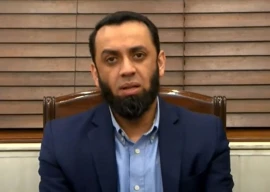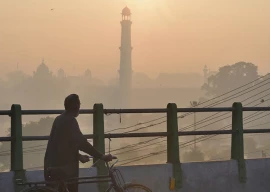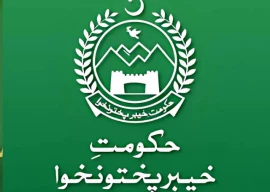
It seems owners of public transport vehicles will go to any length to ensure they are not without CNG during the three-day weekly closure.
Taxis, vans, pickups and even buses have started installing multiple compressed natural gas (CNG) cylinders in their vehicles, doubling and even quadrupling their fuel capacities.
The practice, however, though seemingly beneficial for transporters, has a potential downside. Experts said that the increased pressure with use of multiple CNG cylinders is often more than the, “Unauthorised and faulty vessels” installed in these vehicles can handle. The results could be potentially fatal as an explosion resulting from leaked CNG could engulf the entire vehicle in a matter of seconds.
Most recently, in July a 15-passenger mini-bus travelling from Rawalpindi to Kalar Sayeddan caught fire. Nine people were killed in the fire that engulfed the entire bus “within a minute”, according to survivors and eyewitnesses. Experts blamed the poor CNG kits in the bus for the accident, saying properly installed kits “do not leak like this”.
(Read: Travelling to death)
A survey carried out by The Express Tribune in Rawalpindi city revealed that almost every mode of public transport had installed more than one CNG cylinder and there is not authority to keep check on the dangerous practice.
Mehtab Ali, a taxi driver, said that he keeps a five kilogramme liquid petroleum gas (LPG) cylinder under the driving seating, which he uses as backup fuel on days when CNG is not available.
Similarly, transporters plying Suzuki vans on different routes of the city were found to be using two and even four CNG cylinders. They claimed that one cylinder with a carrying capacity of four to five kilograms (kg) CNG is insufficient to cope with the three-day weekly CNG load shedding.
The worst situation was observed in buses, whether mini or larger, that had installed four to six CNG cylinders under passenger seats, with little regard for passenger safety, according to one expert.
A Civil Defence official requesting anonymity said that there are no rules to control the use of multiple CNG cylinders in vehicles.
Rawalpindi Regional Transport Authority (RTA) Secretary Asad Kazmi conceded, saying his office could only check the quality of cylinders and not the number of cylinders installed.
“We can impound any public vehicle carrying a welded cylinder or one not approved by government authorities, or ones with CNG cylinders installed on their roofs,” he said.
Responding to a question, Kazmi said that if there was any one that could stop the installation of multiple cylinders in public vehicles, it would be the Oil and Gas Regulatory Authority.
Published in The Express Tribune, September 24th, 2011.
1719315628-0/BeFunky-collage-(8)1719315628-0-405x300.webp)


1731329418-0/BeFunky-collage-(39)1731329418-0-165x106.webp)












COMMENTS
Comments are moderated and generally will be posted if they are on-topic and not abusive.
For more information, please see our Comments FAQ